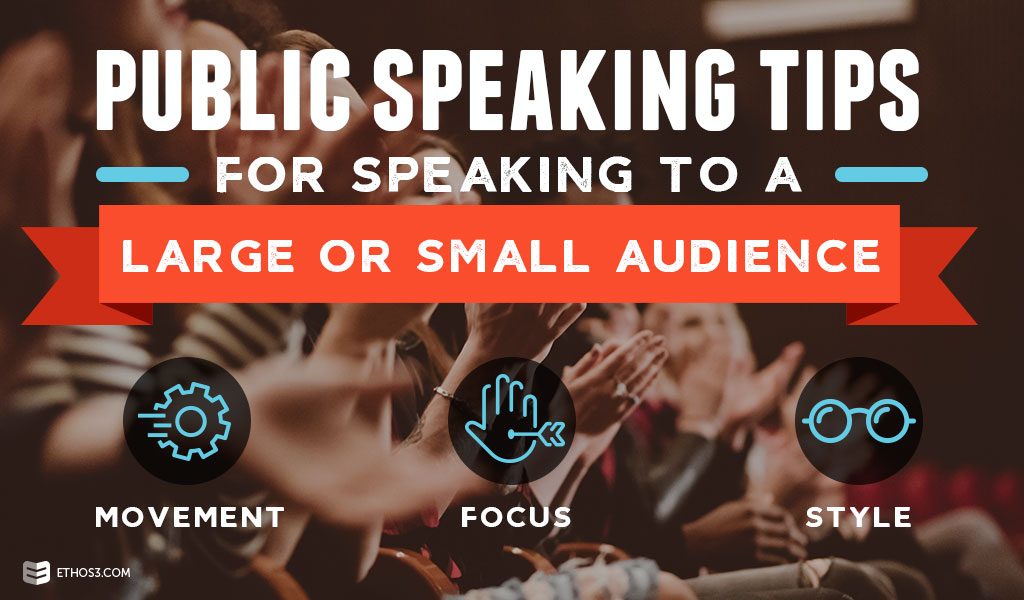The success of a presentation depends on the audience. The more you know how to address their needs and deliver results to them, the better impact your presentation will have. Sometimes presenters speak in front of large groups at trade shows or conferences. Sometimes the audience may only be made up of two people. Not matter the size, there are key differences in how you can perform for them. These public speaking skills will reveal simple tips to help you present in front of a large or small audience.
The Business Journal’s Anett Grant identifies the three areas a present must adjust for a different size audience. These adjustments can help you better connect to your audience, leaving a lasting impression. Follow these public speaking tips to better your presentation for a room packed to the brim or a party of three.

Movement
Moving during a presentation is an important part of the performance. Hand gestures and deliberate steps will help you address every corner of the room. For an auditorium with a large crowd, Grant suggests asking these questions before you give your presentation:
“Will you be projected on a screen? How many cameras are there? Will you be shown from different angles? And so on. Make sure you have a strong grasp of how you’re going to look if/when you choose to move.”
If you are speaking to a much smaller audience, Grant says movements have more impact. Stopping to make eye contact with the audience after making a point will make your message heard. The key is to be intentional with every movement you make.
Focus
In large arenas, the presenter can feel the energy coming from the crowd. Speeches can become emotional, motivating and exciting. Grant recommends riding the wave of the energy and live in the moment. The more natural you appear, the more your audience will believe you. Show your crowd your true self and create an everlasting moment.
In a smaller setting, the audience energy will be far less than a big conference. A small audience may not be appropriate for a fiery, passionate speech. But there is an opportunity here that you won’t find with a bigger audience. Presenters can take some time to speak one-on-one with their participants. This gives you the chance to learn more about your audience as individuals and make the presentation feel like a conversation.
Style
The bigger the audience, the bigger the persona, right? Grant disagrees. While speaking to a large audience, Grant says it’s important to tone it down and make the experience more personal. Presenters don’t have to work as hard to draw attention to themselves since they are already in the spotlight. Telling a story or talking about a personal experience can help your speech feel more intimate.
Speaking to a smaller group around a conference table can lead to audience members zoning out. And you’ll notice it too. How can you keep people from pulling out their phones or staring at the clock? Through practicing the first two public speaking tips in the article; movement and focus. Grant says it can be harder to draw in a small audience, but making the right movements and focusing on your audience’s needs can help.
Want to discover more about how well you will present in front of different types of audiences? Take our one-of-a-kind Badge assessment. This test helps identify your unique and personal public speaking skills so that you can better your presentations.
More from the Ethos3 Blog:
The Complete Guide to Knowing Your Audience
The Psychology of Making Audience Connections in Presentations